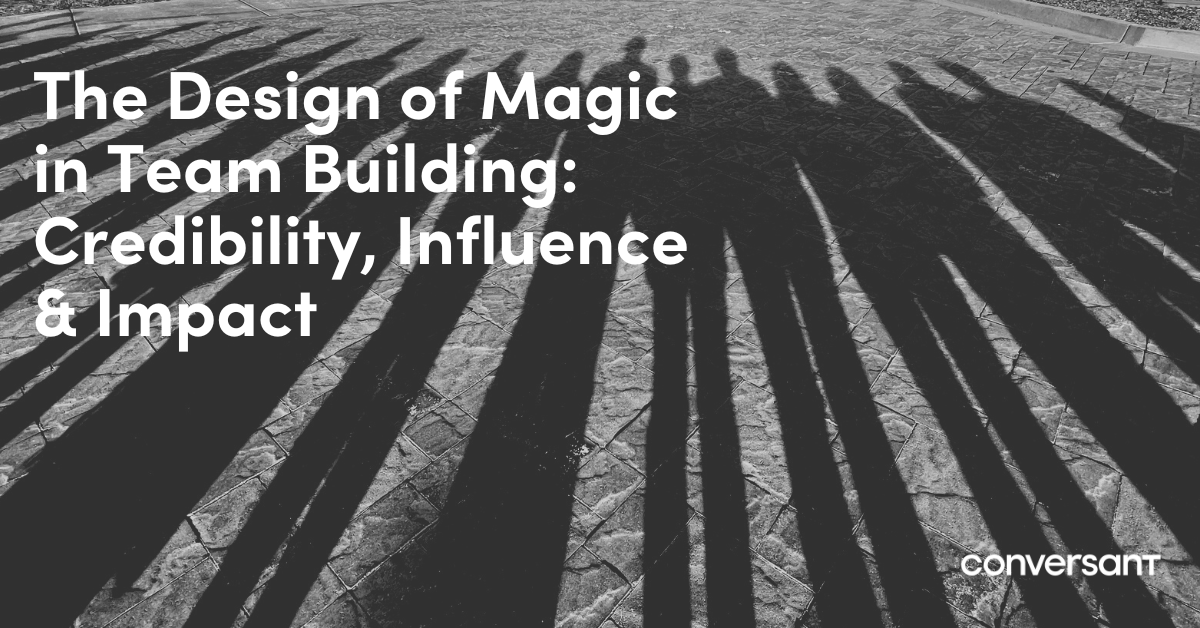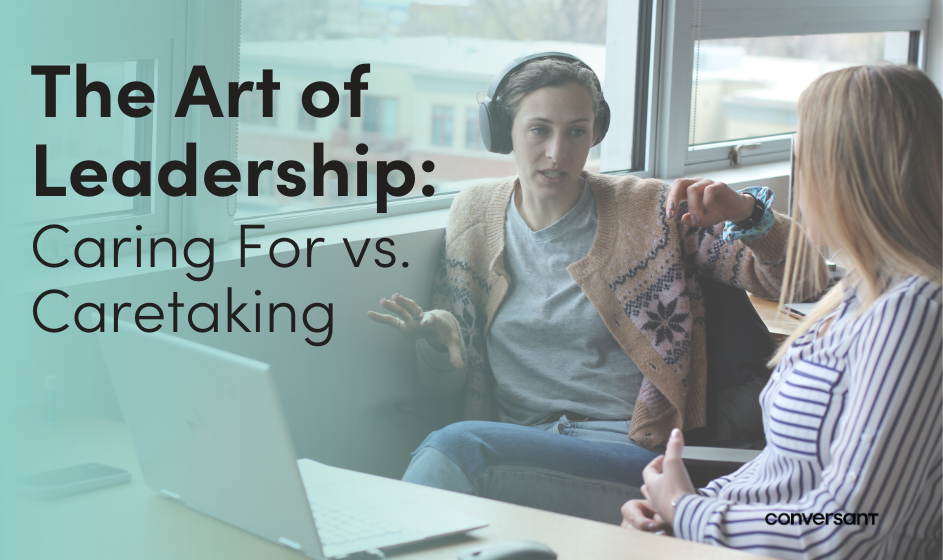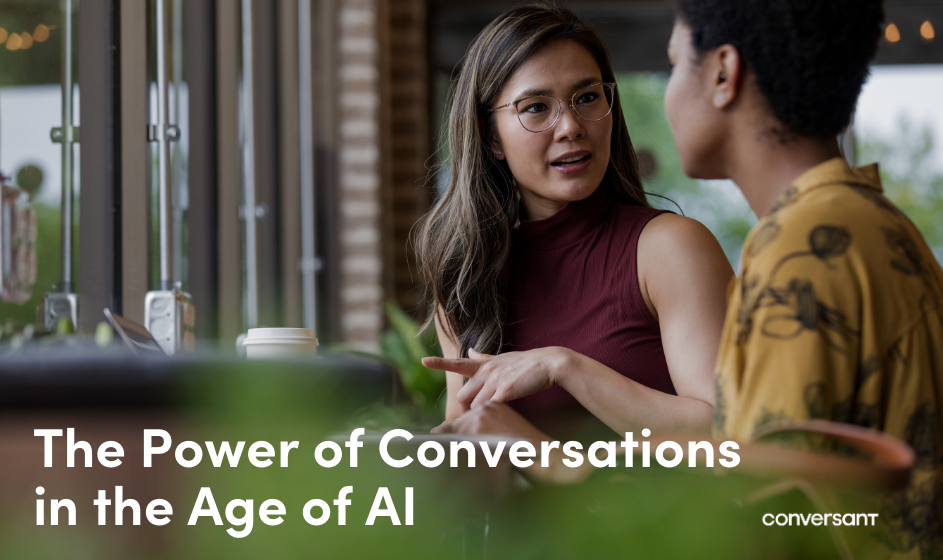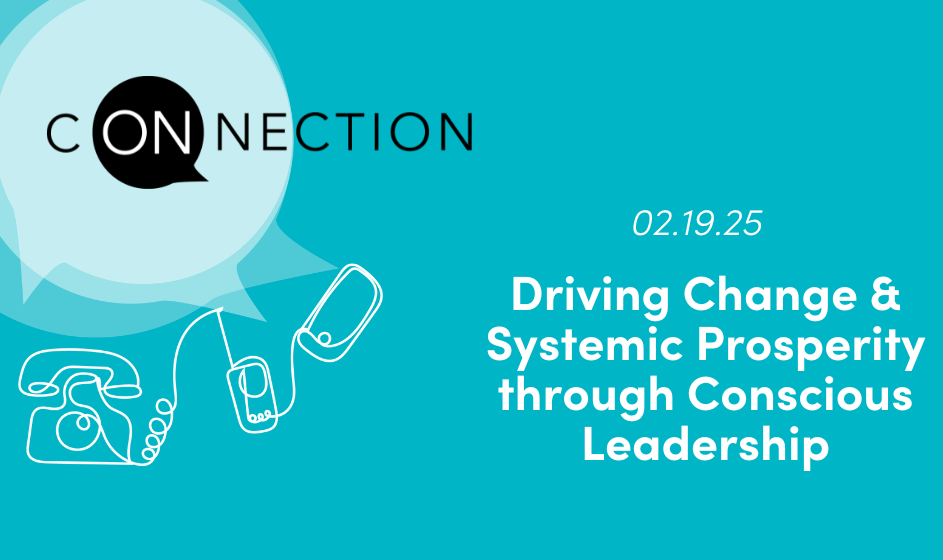In 2022 I had the privilege to be a participant in Conversant’s generative leadership program, Credibility, Influence and Impact. About once a year we have the opportunity to bring a group of senior leaders together from different organizations, functions and backgrounds for intensive coaching and personal development over the course of about eight months. Entering the cohort, especially as a younger leader than most in the group, I had nerves about whether I would be able to identify with executive challenges at such a personal level and certainly some worries about whether they would find my struggles valid. I was shocked to find out I wasn’t alone—after the first introduction, someone I consider extremely accomplished remarked that hearing everyone’s stories left her in awe of the group, and perhaps even feeling like she had a lot to live up to.
As far as I remember there wasn’t any singular, catalyzing moment where we became a community, but I do remember that it happened sooner than I thought it would. By the end of the second day, we stopped relating to each other by our titles or other affectations, and instead we saw the man who wanted to be a role model for his young children, and the woman who overcame so many barriers to find her success. In fact, I started to hear questions about how Conversant managed to choose this group of people who were so suited to work together. What magic formula did we have to build this team?
There is no magic team generating formula, and there is nothing occult or mysterious. The enrollment process is of course taken seriously, and ensures that each person is prepared to make the time commitments required and is devoted to evolving their leadership skills. However, those foundational logistics aside, I witnessed firsthand that our cohesion stemmed from the design of our experiences together, and how this human connection can be possible in any organization or department. Here’s what I noticed and felt during our time as a cohort that made this kind of “teaming” a reality:
We found parallels in our differences. As we shared and explored each person’s stories, we found that many of us had similar highlights and low points in our own lives. As I look further into my thirties, for examples, I was curious about what others experienced in the second decade of their careers. Across so many stories, almost everyone experienced a confidence of self in that decade, made life-changing decisions about family and commitment, and differentiated themselves as leaders in a way that hadn’t been present before (I was surprised by how many people stood up to a “terrible boss” at this point in life).
And as much as I learned from the experiences shared in our cohort, I felt their curiosity about my story and circumstances, too. Leaders who wanted to focus on developing others and establishing their impact in the world asked me about what I envisioned for the future and what might be needed to get there.
We didn’t “let the clay harden.” Our brains, and often our roles at work, predispose us to make quick judgments. In situations with clear answers, this can be helpful—you don’t have to think about how your body climbs stairs, you just do it. But in complex and interpersonal situations, those automatic processes can sometimes cause mischief. If I approach a conversation thinking I already know what you’re going to say or how you’re going to react, why have a conversation at all? That sort of anticipation is not rooted in presence and can lead to missed opportunities to expand our knowledge, our learning, and our capacity to collaborate. The program included opportunities for surprise and continued learning on an individual and collective level.
We cultivated responsibility for one another. Every day of the program we saw a set of ground rules on the wall. At the end of the list was the following: We are responsible for the safety and learning of ourselves and others. More than simply having a common goal for personal development, we considered ourselves responsible for the entire group’s development and success. To do this I discovered my capacity for asking questions and getting to know what my teammates wanted from work and from life. I also had to let my team in on what mattered most to me, the things that held me back, and ask them for help. There was a shared degree of vulnerability.
Over the course of the program we supported each other through tough times of illnesses, layoffs, or children going off to college; we cheered each other on through promotions, new relationships, and setting bold strategic goals. I saw the courage my team members now had to take on challenges they never expected, and the people closest to me repeatedly commented on how different I seemed by the end of the program—more engaged, more confident, and more curious. These seemingly magical shifts, and the community we built, are available within any organization, any diverse group of people, with the right intention and leadership.
Credibility, Influence & Impact 2023 is now open for enrollment. Learn more here.




